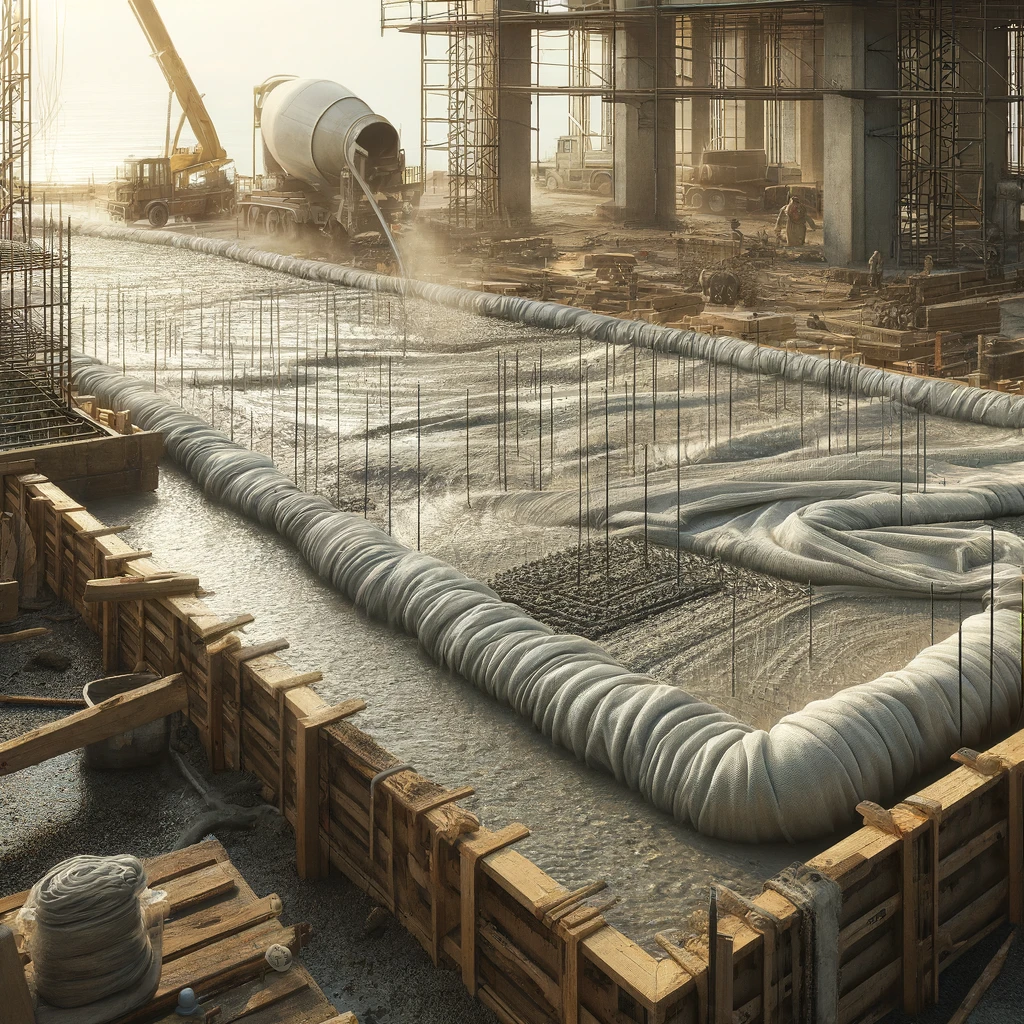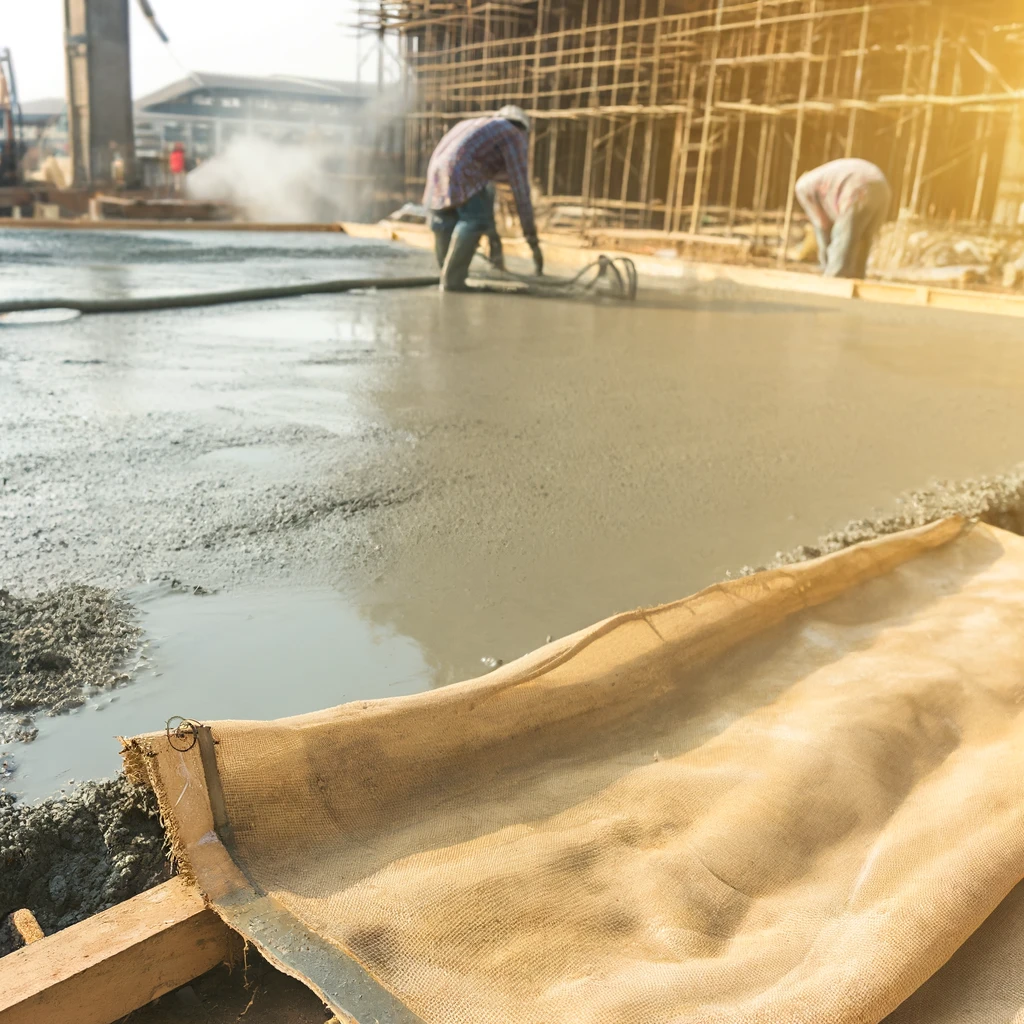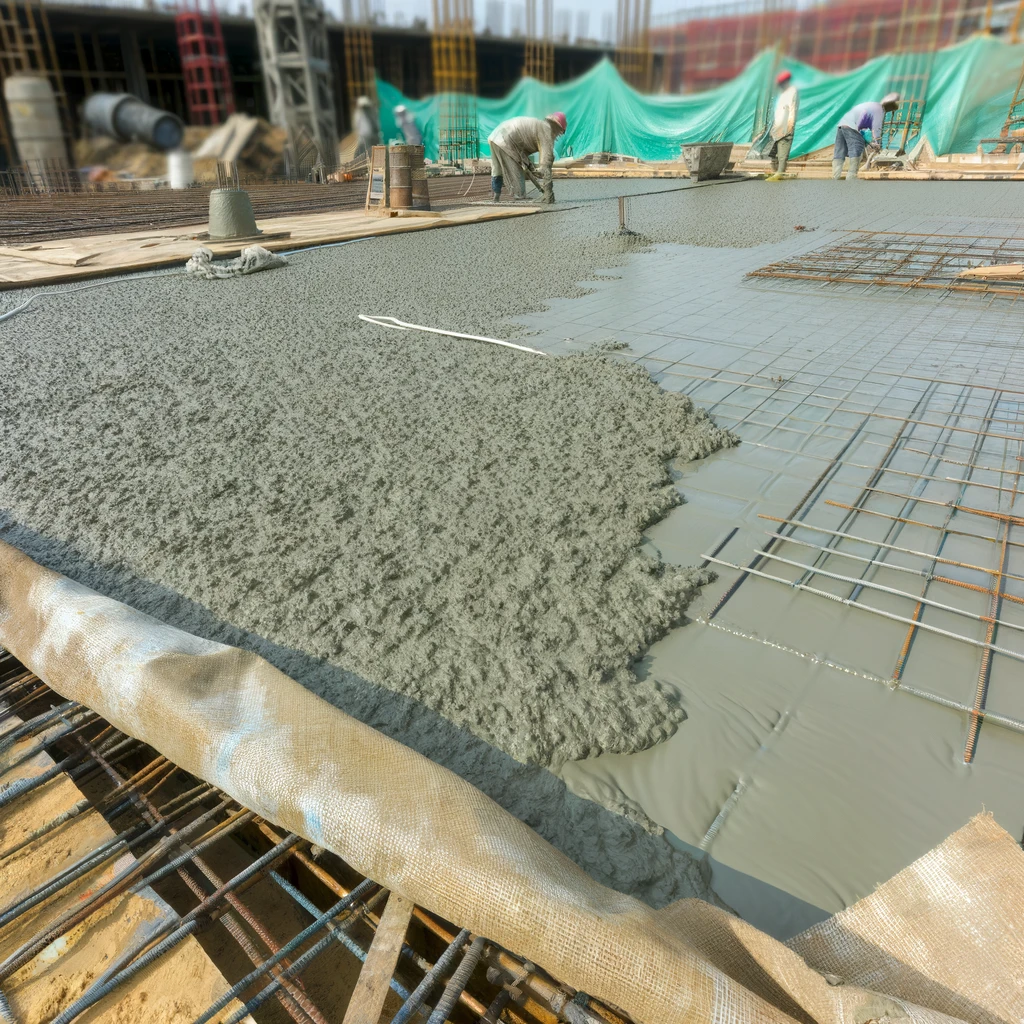The Art and Efficiency of Curing in Construction
Curing in the construction context, is the process of maintaining the moisture and temperature conditions that concrete needs to maximize its hydration, strength and durability.
This process, when performed efficiently, can lead to improvement in the quality of construction and shorter project cycles.
Efficient curing is significant for a number of reasons. For one, it helps to maximize the concrete’s strength. Secondly, curing done well can reduce surface shrinkage, resulting in fewer crack formations and increased durability of the structure. Lastly, a speedy and efficient curing process can lead to reduced costs and resources.
Now that we understand how crucial efficient curing can be, let’s jump into a few available methods to increase its efficiency.

Table of Contents
Increasing the Efficiency of Curing in Construction
Curing in construction refers to the process of maintaining the moisture and temperature conditions of concrete to continue and maximize hydration, resulting in better strength and durability.
Improving the efficiency of this process can result in improved quality of construction jobs and shorter project cycles. Let’s break down some key strategies that construction professionals can employ.
The importance of Efficient Curing in Construction
Improving the efficiency of curing in construction is crucial for several reasons.
- Strength development: Proper curing helps maximize the concrete’s strength.
- Durability: Well-cured concrete reduces surface shrinkage, leading to fewer cracks and better durability.
- Cost-effective: Prompt and efficient curing can save time and resources, reducing total project costs.
Methods to Increase the Efficiency of Curing
Now that we understand the importance of efficient curing in construction, let’s look at some methods that can be employed to increase its efficiency.
Proper Mix Design
A well-designed mix can improve the efficiency of curing since the right proportions of cement, water, and aggregate provide optimal conditions for hydration to occur (ScienceDirect).
Use of Curing Compounds
Curing compounds form a thin film on the concrete surface to reduce water loss, thus enhancing the curing process and improving efficiency. They are typically sprayed onto the concrete after it has set.
Appropriate Curing Period
Ensuring the required curing period is observed is essential for efficient hydration. Typically, concrete should be cured for at least 7 days, but this can vary according to the specific type of cement used.
How to Measure the Efficiency of Curing
Efficiency of curing can be measured by several factors which involve:
- The final strength of the concrete
- The durability and lifespan of the concrete structure
- The appearance – well-cured concrete should have a smooth, hard surface with minimal cracks
- The time and resources invested in curing – efficient curing should use optimal amounts of both
Efficient curing is key to successful and durable construction projects. Through careful mix design, appropriate use of curing compounds, along with the right curing period, the efficiency of curing can be greatly improved, resulting in higher-quality concrete and potentially lower construction costs.
It pays to invest time, care and consideration into this important process.

Best Practices for Curing Concrete
Top Practices for Curing Concrete
1. Maintaining Optimum Moisture Levels
Ensuring that the concrete is consistently moist aids in steady and effective curing. Concrete should never be left to dry out too quickly.
2. Favorable Temperature Conditions
Avoid extreme temperatures. Ideal curing temperatures range between 50°F (10°C) and 85°F (29°C).
3. Adequate Time for Curing
Depending on the specific concrete mix and environmental conditions, curing should be maintained for a minimum of 3 to 7 days following the initial set.
Common Methods of Curing Concrete
Here are some common methods used to cure concrete:
- Water Curing – The concrete is constantly saturated with water either by immersion, ponding, or misting.
- Spray-on Curing Compounds – A chemical compound is used to seal moisture within the concrete.
- Wet Covering – Covering the concrete with a saturated material like burlap or straw that keeps the surface moist.
- Curing Blankets or Covers – Such covers help in maintaining the right temperatures and humidity levels for curing, especially in harsh climates.
Concrete Curing Time
Once concrete curing begins, it is crucial not to disturb or put any pressure on the concrete until it has had sufficient time to cure.
| Concrete Mix | Minimum Curing Time |
|---|---|
| Standard Mix | 3 to 7 days |
| High Early Strength Concrete | 24 to 48 hours |
Curing concrete properly plays an integral part in building constructions. Thus, mastering best practices can ensure that the concrete structures are durable, resistant, and likely to stand the test of time.
For more detailed information about curing concrete, you can visit this comprehensive guide.

the Different Methods of Curing Used in Construction
Multiple methods are used in construction for curing, each imparting varying benefits and features.
Water Curing
Water curing is widely recognized as the most efficient and effective method used in construction. It is typically performed in three distinct ways:
- Ponding or Immersion: Involves completely immersing the concrete in water.
- Spraying or Fogging: Involves sprinkling water over the concrete surface.
- Wet Covering: Involves covering the concrete with water-soaked materials like sand, hessian, sawdust, etc.
Membrane Curing
Compounds for Membrane Curing
If the application of water is not feasible, membrane-forming curing compounds are used. These compound types form a thin layer or film that helps conserve moisture within the concrete.
Plastic Sheets for Membrane Curing
Plastic sheets can also serve as membranes. However, these sheets must be carefully installed to avoid any gaps which can lead to partial curing and consequent uneven strength in the concrete.
Steam Curing
Steam curing becomes reliable when there’s a need to expedite hardening, especially in prefabricated concrete or in cold weather conditions.
Internal Curing
This method is implemented by including water-absorbing materials into the concrete mix that then release the stored water gradually, promoting more thorough and efficient curing.
Electrical Curing
In this curing process, an electrical current gets passed through the concrete to speed up the hardening process. It is mostly used in large-scale construction projects due to the significant energy costs required.
Sources
| Curing Method | Application | Pros | Cons |
|---|---|---|---|
| Water Curing | General construction | Efficient, cost-effective | Not effective in cold conditions |
| Membrane Curing | Where water scarcity | Conserves moisture | Requires careful installation |
| Steam Curing | Pre-fabricated concrete, cold conditions | Speeds up hardening | Requires energy to create steam |
| Internal Curing | All types of concrete | Provides thorough and efficient curing | Requires addition of specific materials to mix |
| Electrical Curing | Large-scale projects | Speeds up hardening dramatically | Expensive energy costs |
Concrete Curing Conclusion
In conclusion, optimizing the efficiency of curing in construction is integral to producing robust and enduring structures.
It’s notable that a thoughtful mix design, judicious application of curing compounds, and adherence to requisite curing periods can significantly enhance the efficiency of curing.
From our perspective, this not only results in a substantial improvement in the quality of concrete but can also contribute meaningfully to cost savings in construction.
Therefore, we’ve found that investing in this key process of curing is more than worthwhile in the construction industry.






